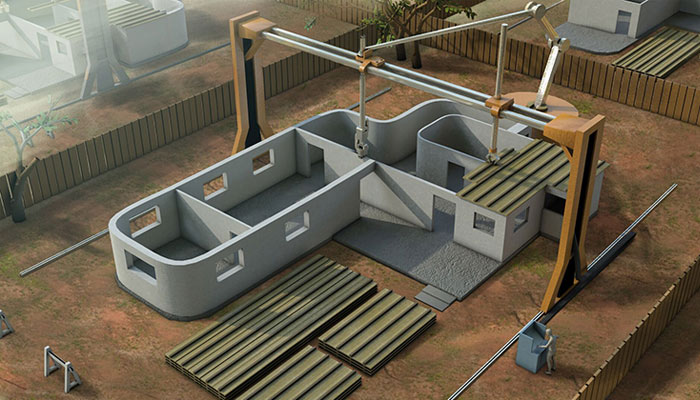As we move through the advancing landscape of technology, one breakthrough stands significantly in the field of construction: 3D printing. This exceptional approach is revolutionizing the way developments and edifices are envisioned and built, ushering in a new era of effectiveness, sustainability, and innovation.
Transforming Building: One Stratum at a Phase
The integration of 3D printing in infrastructure delivers numerous revolutionary advantages. Primary among these is the drastic reduction in material surplus. Traditional infrastructure techniques typically result in considerable surplus materials that add to environmental depletion. In contrast, 3D printing employs a precise layer-by-layer method, using only the required portion of material and thus minimizing surplus greatly.
Another noteworthy benefit is the dramatic decline in building duration. Projects that conventionally require long periods can be completed in a segment of the timeline with 3D fabrication innovations. This time reduction is due to the mechanized functionality of 3D devices that can operate continuously without human involvement, greatly reducing overall development schedules.
Moreover, 3D fabrication introduces possibilities for constructing complex, tailored structures at no added expense. The adaptability of 3D printers enables for elaborate patterns and structures to be developed that would either be extremely pricey or unfeasible to attain with traditional building methods. This capability not only elevates architectural aesthetics but also permits engineers to optimize layouts for enhanced performance and resilience.

Cutting Expenses and Improving Accessibility
Cost minimization is yet another major advantage delivered by 3D fabrication in building. By minimizing manpower costs and shortening the duration needed to finish projects, the total budget linked to constructing frameworks is lowered. Moreover, affordable 3D fabrication units are getting more attainable, making this method accessible to startup companies and individuals keen to explore its capabilities.
The budget-friendliness of these devices also paves the way for innovation in related fields such as clothing production. While primarily acknowledged in construction industries, the reach of 3D fabrication expands into multiple areas including design. Here, creators experiment with 3D printed garments, expanding artistic limits and revolutionizing textile handling while gaining cost-effective production expenses.
An Eco-Friendly Era Fueled by Innovation
Sustainability is another pillar of this innovation’s value in the building field. 3D printing encourages a eco-conscious strategy to development by minimizing substance surplus and resource usage. Additionally, it enables the integration of green materials like reclaimed synthetics or hybrid mixtures, which additionally lowers the ecological impact of this conventionally heavy-polluting industry.
The global transition to green approaches discovers a strong supporter in 3D fabrication innovations, likely transforming how building regulations and standards are established in the future. By integrating these innovative processes, the infrastructure industry moves towards realizing eco-friendly operational models.
Transforming Visions to Existence
Visualize community centers in low-income neighborhoods being erected within weeks to address pressing demands or architects creating masterpieces reflecting natural formations that harmonize effortlessly into their environments – such scenarios are not merely hypothetical but are rapidly becoming feasible through 3D manufacturing.
While these breakthroughs indicate just the onset, they indicate a future where construction aligns perfectly with both societal dreams and environmental responsibility.
If we advance on this path, construction will not only mean the tangible development of spaces but also signify a commitment to forward-thinking approaches and sustainable living. Connecting imagination with practicality, 3D printing stands poised to reshape our tangible environment in manners we are just beginning to understand.
Through continual advancements and an adoption of these cutting-edge strategies, our developed environments will certainly evolve into manifestations of societal creativity powered by the accuracy and limitless possibilities of 3D fabrication.
For more details about may in 3d gia recheck out this useful net page
